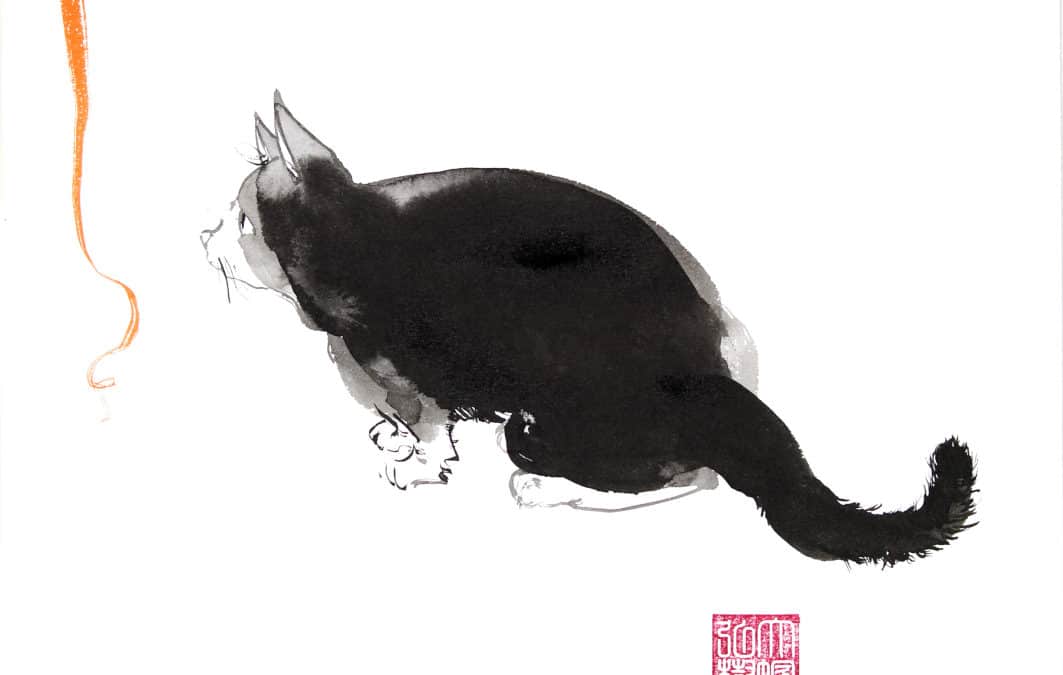ABOUT THE ARTIST
A professional comic book illustrator since 1994, Brooklyn-based Japanese artist/illustrator Hiroki Otsuka has illustrated for a number of major Japanese publications. In 2005, Hiroki Otsuka’s focus shifted from graphic to fine arts, working predominantly with traditional sumi ink used in Japanese calligraphy. Hiroki Otsuka’s debut solo show at Brooklyn’s Stay Gold Gallery in 2005 prompted The New Yorker to write that his works “push the populist youth quotient through the roof.” Since then, his work has appeared in galleries throughout the United States and Japan, and has been featured in international art fairs in New York, Tokyo and Basel, Switzerland. He’s been exhibited at major art institutions such as The Museum of Contemporary Art, Los Angeles (Nothing Moments, 2007) and in academic settings such as Pittsburgh University Art Gallery (Making Faces: Depiction of Women in Japan from Edo to Today, 2009). In 2007, Hiroki Otsuka was featured in Japan Society’s centennial exhibition Making a Home, curated by Eric C. Shiner, that highlighted 33 Japanese contemporary artists living and working in New York. Berlin’s Kunstraum Richard Sorge held a major exhibition of Hiroki Otsuka’s paintings and murals in 2009 entitled Everything to More. The same year, Otsuka provided the integrated illustrations for choreographer Jeremy Wade’s critically acclaimed multimedia dance there is no end to more, a Japan Society commission which had its world premiere in New York in December 2009. Hiroki Otsuka served as Japan Society’s first-ever manga artist-in-residence during the exhibition Graphic Heroes, Magic Monsters: Japanese Prints by Utagawa Kuniyoshi from the Arthur R. Miller Collection. Most recently, a show of new work, “Men and Cats,” has been hung at the Wayfarers Gallery in Brooklyn, and in the Woodland/Shimko Galleries in Provincetown, Mass. and Palm Springs. https://www.hirokiotsuka.nyc
ARTIST STATEMENT
Ne-Ko
Cats have captivated Japanese artists for more than a thousand years. In the Tale of Genji, the masterwork of 11th century literature, a cat sets the plot in motion by knocking over a screen, and the moment has been captured time and again in prints and paintings. With the arrival of ukiyo-e, the woodblock printing style of the 17th century, the homes of Japan became populated by the world’s first great wave of cat art, featuring the animals both in their natural form and walking upright in kimonos. Perhaps it is not surprising that Hello Kitty, the most famous illustrated feline, also comes from Japan.
Hiroki Otsuka’s work consistently mixes the media and methods of high and popular art. In “Ne-Ko,” which means cat in Japanese, he approaches this time-honored subject. Otsuka uses the traditional, black-ink style of sumi painting to capture the animals’ pose and self-possession. But it is his eye as a manga cartoonist of 25 years that gives his subjects the motion and playfulness that has endeared them to their human companions.

